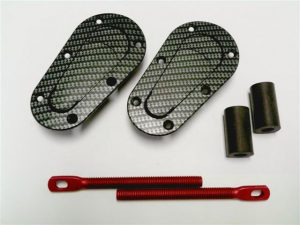Why Fastening Carbon Fiber Is Such A Tricky Process
If you are involved in the automotive industry, one of the things that you will have noticed is the increased interest in the use of carbon fiber in the manufacture of cars. This is a particularly expensive compound, though increasing technology means that in the near future, it will be available more widely.

One of the challenges that you are likely to face when using carbon fiber or other composite materials is that they do not respond to pressure in the same way that other materials such as metals do. This is mainly because they have a very different structure. For instance, if you used regular aluminum carriage bolts or monel 400 hex head cap screws to fasten the composite materials, it might turn out to be more difficult than you think. Some of the difficulties associated with using composite materials include:
The likelihood of crumbling and flaking
Carbon fiber is structured in such a manner that it comprises a set of woven fibers instead of one solid material. Unlike most other types of composite material, there is no resin to hold each fiber in place. In fact, this is one of the major reasons why carbon fiber is very light.
However, this lightness comes at a price. The fact that the carbon fiber has no resin means that if you are too enthusiastic about the placement of fasteners in it, you might end up making it flake and crumble. The only way to avoid this is by making use of the right fasteners, and also ensuring that you don’t use too much torque in putting the fastener in place.
The high cost of mistakes
The other challenge you are likely to face when using carbon fiber is the fact that mistakes can be very expensive. For instance, if you are fixing a panel to a car and you end up damaging it by using too much torque to put the fastener in place, the entire panel might end up getting damaged. This in turn means that you would need to spend even more money replacing it, since it’s not technically possible to fix such defects. This calls for more care when handling any materials or panels made out of carbon fiber.
The risk of load concentration
If you have a sheet of carbon fiber and you drill a hole in it in order to place a screw, the hole might become the point through which all the stress in the material is transmitted. This means that with time, cracks might start appearing in the carbon fiber panel starting at that point. This can be avoided by minimizing the number of fastening points you have in the panel, as well as making sure that you use fasteners that can distribute the weight well.
If you are interested in using carbon fiber in manufacturing in the near future, it would be wise to be very keen about the types of fasteners you will use for the job. Failure to do this will often lead to a lot of frustration.
About the Author

Started my career in the fastener world in 1969 at, Parker Kalon Corp. a NJ based screw manufacturer located in Clifton, NJ working in inventory control, scheduling secondary production and concluding there in purchasing. In 1971 I accepted a sales position at Star Stainless Screw Co., Totowa, NJ working in inside sales and later as an outside salesman, having a successful career at Star I had the desire with a friend to start our own fastener distribution company in 1980 named: Divspec, Kenilworth, NJ. This was a successful adventure but ended in 1985 with me starting Melfast in August 1985 and have stayed competitive and successful to date. Melfast serves the OEM market with approximately 400 accounts nationally.